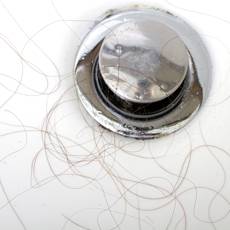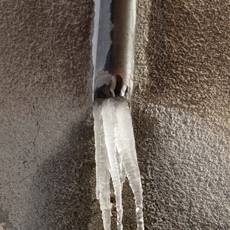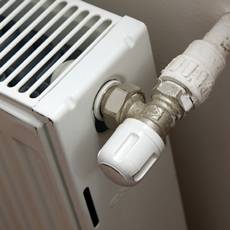Winter can be every homeowner’s worst nightmare– if it means enduring every imaginable plumbing mishap.
Extreme cold can turn even the smallest of leaks into a full-blown repair. Freezing pipes can mean double time for the water heater, which would immediately translate to skyrocketing utility bills. Taking time to winterize your plumbing system will keep it in tip-top shape no matter how bad it gets outside.
From frigid morning showers and flooding to broken radiators and cracked pipes – there is a long list of unwanted plumbing issues you might encounter during winter. Giving your plumbing a little TLC can prolong its life and avoid costly repairs. Here’s how to take care for the pipes in your house before and during the arrival of the winter season and cold weather.
 1. Unclog your drains
1. Unclog your drains
There is a quick, safe and environmentally-friendly cleaning process that you can do to bid adieu to messy, smelly and clogged drains. Combine 1 cup of baking soda, 1 cup of salt and ¼ cup of cream of tartar together. Pour equal amounts into your various sink and bathtub drains then follow it with 2 cups of boiling water. Do this once a week.
2. Insulate your pipes
Guard both your hot and cold water pipes against freezing by using a special insulating tape or foam padding sleeves around them. If you have any exposed pipe or plumbing fixtures, use space heaters (from a distance) to keep them warm. Every now and then, check out pipes in little used areas around the house, such as basements, to make sure that there are no cracks developing and that there are no frost or ice accumulating.
 3. Check your water supply lines
3. Check your water supply lines
This should be done especially for those located in unheated areas such as under kitchen and bathroom cabinets, crawl spaces, attics, basements and garages. Insulate all pipes to prevent the flow of cold air in these areas.
What to do when indoor faucets freeze:
- Allow more hot air to circulate around the faucets by leaving the cabinet doors under it open.
- If it gets intensely cold, let water from each valve trickle very slowly into the sink on a daily basis.
What to do if pipes freeze, crack or burst:
- Use a heat gun or a blow dryer to thaw frozen pipes but do not use open flames.
- Relieve pressure from the faucet by leaving it on.
- Turn off the water at the main shut-off valve.
- Don’t forget outdoor spigots and hoses
Before freezing temperatures arrive in the fall, close the shut-off valve on the pipes which lead to your outdoor spigots and then detach your garden hoses. Make sure you have already drained all residual water from hoses or spigots before doing this.
 4. Keep your sewer lines or septic tank clear
4. Keep your sewer lines or septic tank clear
Whether your line is connected with the municipal sewer system or you have your own septic tank, it is important to have a professional plumber snake your main sewage cleanout every 3-5 years. Though it would set you back at least $200 to $500, it will prevent from messy sewage backups and ensure you don’t wade in filth or have contaminated drinking water.
Moreover, you should also put an insulating cover or blanket over the system to trap heat inside it, which will encourage faster metabolism rate among the bacteria. This will also prevent the frost from going deeper into the septic component, therefore making the entire system freeze-proof.
5. Perform regular plumbing maintenance
A professional system check and repair is an effective way to prevent frozen pipes especially if it is forced to work extra hard during freezing temperatures. Insulating your pipes is a must if you don’t want to make that emergency call to a plumber in the middle of the winter. However, a certified professional plumber has the right equipment and experience to locate where the air is getting in and how to seal it properly. This might cost you more money than you’re willing to spend, but it will save you from any DIY disasters and keep your plumbing working as efficiently as possible during the cold season.













Write a Comment